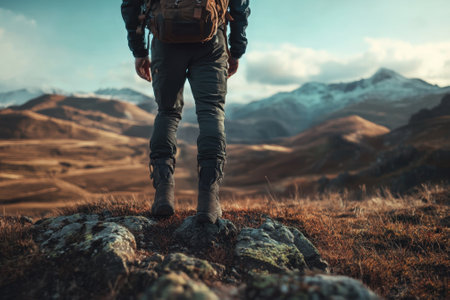Understanding Your Responsibilities in the British Wilderness
Embarking on a wildlife photography adventure across the rolling hills, ancient woodlands, and rugged moorlands of the British countryside is not for the faint-hearted. As you shoulder your camera and step into these untamed realms, your journey transcends mere image-making; it becomes a test of character, respect, and resilience. The UK’s landscapes teem with delicate ecosystems and storied traditions, demanding that every photographer acts as both explorer and guardian. At the heart of this responsibility lies adherence to the Countryside Code—a quintessentially British set of guidelines that champions respect for nature, wildlife, and fellow adventurers. Local etiquette weaves through every bridleway and stile: close gates behind you, tread lightly on footpaths, greet passers-by with a nod or cheerful “morning!” Whether you’re stalking red deer in the Highlands or capturing the dance of kingfishers along a Somerset brook, your presence must leave no trace but footprints and wonder. In this land shaped by centuries of coexistence between humans and wild things, ethical photography is not simply encouraged—it’s expected. As you chart your course through misty valleys and wind-battered cliffs, remember that every click of the shutter carries an unspoken pact: to honour Britain’s natural heritage and ensure these wild stories endure for generations yet to come.
Respecting Wildlife and Their Natural Habitats
The thrill of capturing Britain’s elusive wildlife is a rite of passage for any adventure-seeking photographer, but with every click comes a profound responsibility. The British countryside teems with sensitive fauna—red deer in the Highlands, badgers in the Cotswolds, and the iconic puffins along rugged coastlines. The temptation to inch closer for that National Geographic-worthy shot can be overwhelming, yet ethical wildlife photography hinges on minimising disturbance and maintaining a respectful distance.
Why Distance Matters
Approaching too closely can send animals into panic, disrupt breeding behaviours, or even force them to abandon nests. In the UK, where many species are already under pressure from habitat loss and human encroachment, the repercussions of “getting the shot” at all costs can be devastating. Observing from afar not only preserves natural behaviour but also ensures photographers witness authentic moments rather than stress-induced reactions.
The Impact of Disturbance: A Quick Comparison
| Action | Potential Consequence |
|---|---|
| Getting close for a photograph | Startling animals; risk of nest abandonment or injury |
| Using camouflage and long lenses | Minimised disturbance; natural behaviour observed |
| Loud noises or sudden movement | Disruption of feeding/breeding; increased stress levels |
Practical Tips for Minimising Impact
- Invest in telephoto lenses to keep your distance without compromising image quality.
- Move slowly and quietly, sticking to established paths wherever possible.
- If an animal changes its behaviour due to your presence—retreat immediately.
In the British countryside, respect is not just good manners—it’s a code that protects the wild heart of these isles. Every mindful action by photographers helps ensure future generations can experience the same raw beauty and adventure. By prioritising the welfare of wildlife over personal achievement, we uphold the ethical foundations that define true outdoor exploration in Britain.

3. Gaining Permission and Building Trust with Local Communities
Securing access to the British countryside for wildlife photography is an adventure in itself, demanding both respect and a spirit of collaboration. The journey begins with gaining explicit consent from landowners—a task that requires more than a polite knock on the farmhouse door. Many of Britain’s most captivating natural scenes are tucked away on private estates or working farms, and wandering in uninvited can be seen as trespass, risking not only your reputation but also the fragile habitats you wish to capture. The first step is always to identify the rightful landowner or estate manager, whether through local council records, village noticeboards, or word of mouth in the nearest rural pub. A respectful introduction goes miles: explain your intentions, show examples of your work, and clarify how your presence will have minimal impact. Often, landowners appreciate a photographer who values their stewardship and may even share tips about where to find elusive species.
But securing permission isn’t just a formality—it’s the opening gambit in building lasting trust. Rural communities in Britain are bound by centuries-old traditions and a deep-rooted connection to the landscape. Approach these communities with humility, curiosity, and a willingness to listen. Join local conservation groups or attend parish meetings; these organisations are often guardians of sensitive sites and rare species, and their members possess unmatched knowledge of seasonal changes, breeding grounds, and best practices for minimal disturbance. By aligning your photographic goals with their conservation efforts, you’re more likely to gain access while contributing positively to ongoing protection initiatives.
Most crucially, transparency is non-negotiable. Be upfront about how you intend to use your images—whether for personal portfolios, exhibitions, or commercial ventures—and seek continued dialogue rather than one-off permissions. Keep rural residents informed about your schedule and whereabouts; unexpected presence can spook not only wildlife but also livestock and local people alike. Share your successes with the community: offer prints for charity auctions or local events as a gesture of gratitude. Over time, these small acts build a network of trust that opens new doors—and hidden landscapes—across Britain’s untamed wilds.
4. Leaving No Trace: Ethical Practices for Outdoor Exploration
Venturing out with your camera into the rolling hills, ancient woodlands, and wild moors of Britain is an exhilarating adventure, but it comes with a responsibility to leave the land as pristine as you found it. The ‘leave no trace’ ethos isn’t just a suggestion—it’s a code of honour for every wildlife photographer who respects the British countryside. By adhering to these principles, we ensure that future generations can revel in the same untamed beauty we seek to capture.
Understanding ‘Leave No Trace’ in the UK
The British countryside is a mosaic of fragile habitats—heathland brimming with nesting birds, riverbanks alive with otters, and meadows blanketed in rare wildflowers. Each footstep matters. The ‘leave no trace’ philosophy, widely adopted by outdoor enthusiasts across the UK, means minimising our impact at every turn. This includes everything from not trampling sensitive vegetation to taking all litter home (even biodegradable items), and resisting the urge to rearrange natural features for a better shot.
Practical Steps to Avoid Environmental Degradation
| Action | Why It Matters | British Example |
|---|---|---|
| Stick to established paths | Prevents erosion and protects delicate plant life | Avoid forging new trails on Dartmoor or the Lake District fells |
| Carry out all rubbish | Litter harms wildlife and spoils landscapes | Pack out tea bags and snack wrappers after a shoot near Hadrian’s Wall |
| Avoid disturbing wildlife nests or dens | Breeding animals are easily stressed by human presence | Keep distance from ground-nesting birds on heathlands in Surrey or Yorkshire Moors |
| No picking plants or moving rocks/logs | Disrupts microhabitats essential for insects and amphibians | Respect bluebell woods in Kent—never uproot flowers for photos |
| Use natural light where possible | Artificial lighting can startle nocturnal or shy creatures | Shoot at dawn or dusk to capture deer in Richmond Park without flash interference |
Cultural Respect and Local Customs
The unwritten rules of rural Britain are as important as formal regulations. Always close gates behind you, greet fellow walkers with a nod or “morning,” and follow requests posted by landowners—especially during lambing season or when fields are freshly sown. These gestures show respect for those who live and work in these landscapes, reinforcing a positive image of wildlife photographers among local communities.
By combining adventurous spirit with ethical restraint, we safeguard the wild heart of Britain. The challenge isn’t just getting the perfect shot; it’s ensuring your presence goes unnoticed by both animal and environment alike. This is what transforms an ordinary outing into a true expedition—one where you become part of the story without leaving your mark on it.
5. Portraying Wildlife Authentically and Avoiding Manipulation
If you’ve ever trekked through a sodden moor at dawn, lens fogging up as curlews call from the mist, you’ll know there’s no shortcut to an honest wildlife shot in the British countryside. The temptation to tweak, bait, or stage a scene is real—especially with social media clamouring for drama and perfection—but at what cost to ethics?
The Ethics of Editing
In the world of British wildlife photography, post-processing is as common as muddy boots. But where do we draw the line between subtle enhancement and outright deception? Adjusting contrast or cropping for composition generally gets a nod, but cloning out distracting twigs or digitally inserting a red squirrel where none existed crosses into manipulation. Authenticity demands that our edits respect the integrity of the moment we captured, not craft a fiction that never unfolded on Dartmoor or in the Cairngorms.
Baiting: A Questionable Shortcut
Baiting—using food or calls to lure animals closer—may seem like an easy win for that perfect shot of a badger or barn owl. Yet, it disrupts natural behaviours and can even endanger wildlife by making them reliant on human handouts or exposing them to predators. True adventure lies in patience and perseverance, not in quick fixes that compromise the wildness of our subjects.
Staging: Where Storytelling Meets Scepticism
Setting up perches or arranging props might help frame a compelling image, but transparency is key. If your kingfisher photo was taken at a managed site with staged settings, honesty demands you acknowledge it. There’s nothing wrong with controlled environments when disclosed; however, passing off such images as “wild” undermines trust and devalues genuine fieldwork under unpredictable British skies.
The Value of Honest Storytelling
The true thrill of British wildlife photography isn’t just in nailing that razor-sharp hare mid-leap—it’s in recounting the hours spent hidden beneath bracken, rain trickling down your collar as you wait for nature to reveal itself. By resisting manipulation and embracing authentic storytelling, photographers honour both their subjects and their audience. The most powerful images are those that evoke wonder precisely because they are hard-won glimpses into lives lived beyond human control—a testament to wild Britain’s enduring spirit.
6. Inspiring Conservation Through Responsible Storytelling
In the rugged moorlands of Scotland, the windswept cliffs of Wales, and the ancient woodlands of England, wildlife photographers are more than mere observers—they are adventurers with a mission. The British countryside offers an extraordinary theatre for those brave enough to venture off the beaten path, yet it is the ethical storyteller who wields true power. By capturing moments of raw beauty with respect and integrity, conscientious photographers shine a spotlight on the fragility of our native species and habitats.
Championing Conservation With Every Frame
Every frame snapped in the wilds carries a message. Powerful images do more than please the eye; they ignite conversations, stir emotions, and foster a sense of stewardship across communities from Cornwall to the Cairngorms. The ethical wildlife photographer becomes a voice for creatures great and small—whether it’s a red squirrel darting through hazel thickets or a curlew calling over misty fens—reminding us that these wild residents deserve our protection.
Raising Public Awareness Across the UK
Responsible storytelling is an act of advocacy. Through thoughtfully composed photographs and honest narratives, photographers bring the public closer to Britain’s elusive wildlife, revealing both wonders and vulnerabilities. These stories ripple outward, fuelling conservation campaigns, inspiring local initiatives, and influencing policymakers. In schools, galleries, and digital platforms, compelling imagery educates and unites people behind the cause of preserving Britain’s natural heritage.
The Adventure Continues: Your Role as a Storyteller
If you’re willing to brave muddy boots at dawn or scale windswept hills for that perfect shot, remember: your work matters beyond aesthetics. Ethical wildlife photography is an ongoing adventure—a quest not just for stunning pictures but for lasting change. By sharing authentic encounters without disturbing habitats or misleading viewers, you become part of a collective effort to safeguard the wild heart of Britain for generations yet to come.


